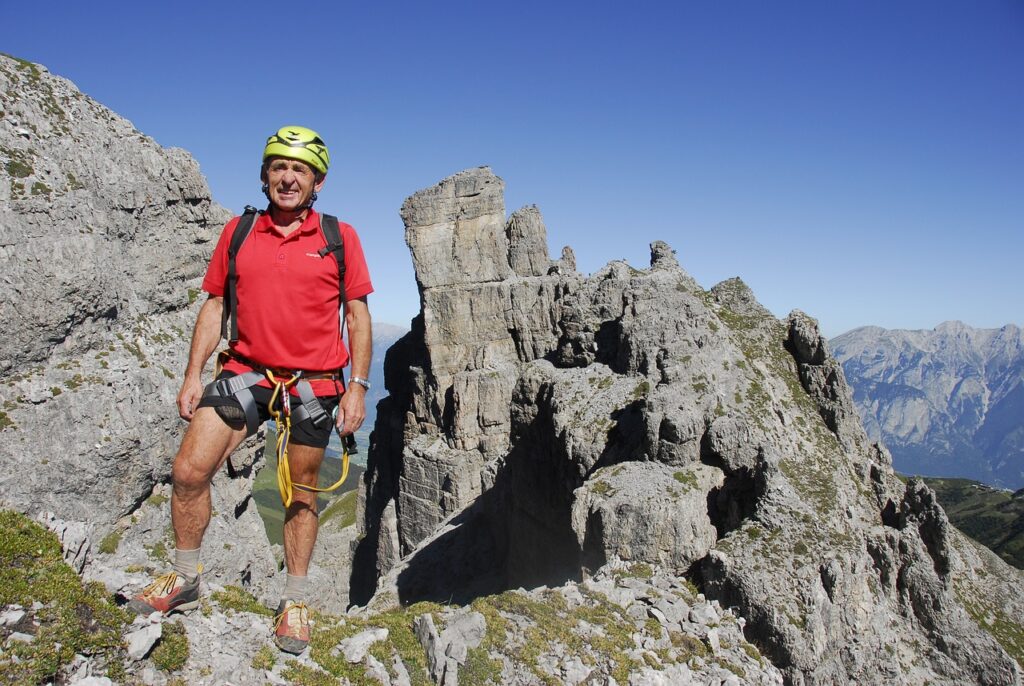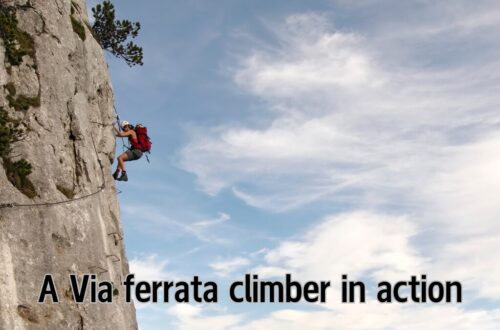Via Ferrata delle Bocchette: One of Italy’s most thrilling Via Ferratas.
One of Italys most thrilling Via Ferratas is right in the heart of the Brenta Dolomites in Trentino-Alto Adige . The Via Ferrata delle Bocchette is an iconic and breathtaking mountain route. Famous for its exposure, rock formations, and great views. The route offers a unique blend of adventure, history, and natural beauty. Spanning several sections, each with its own challenges, the Bocchette system attracts climbers from around the world. This guide explores the highlights, details, and tips for tackling this unforgettable adventure.

Overview of the Bocchette System
The Via Ferrata delle Bocchette is not a single route but a network of interconnected via ferratas traversing the Brenta Dolomites. This system has several key segments, such as Bocchette Centrale, Bocchette Alte, Sentiero Benini, and Sentiero SOSAT, each offering varying levels of difficulty and scenery. Together, these routes form a multi-day adventure that takes climbers across exposed ledges, steep rock faces, and narrow ridges.
Click here for another fantastic Via Ferrata adventure in Italy
Key Sections:
- Bocchette Centrale: The most popular and scenic section, known for its exciting ledges and stunning views.
- Bocchette Alte: A tough and exposed route, suitable for experienced climbers.
- Sentiero Benini: A relatively easier route, often used as an approach.
- Sentiero SOSAT: Offers a mix of ladders and ledges, with moderate technical difficulty.
Highlights of the Route
1. Spectacular Views
One of the main features of the Bocchette is the jaw-dropping scenery. As you traverse narrow ledges high above the valleys, you’ll be rewarded with sweeping views of the surrounding peaks and valleys. The Dolomites’ rugged beauty, with their jagged limestone spires and lush green meadows, creates a surreal backdrop.
2. Exposed Ledges
Bocchette Centrale is famous for its exposed ledges that run along sheer cliffs. These ledges are narrow and require careful footwork, making them both thrilling and challenging. Despite the exposure, the route is well-equipped with cables and anchors, ensuring safety if you’ve a head for heights.
3. Historical Significance
The Brenta Dolomites were a strategic area during World War I. Remnants of the war can still be seen along the route, including tunnels and bunkers. Walking these paths offers a glimpse into the region’s history and adds a layer of poignancy to the adventure.
4. Technical Challenges
Some sections are straightforward, but others, like Bocchette Alte, involve steep climbs, vertical ladders, and exposed traverses. The combination of technical climbing and route-finding adds to the excitement.
Practical Information
Access and Starting Points
The starting point for the Bocchette system is Madonna di Campiglio, a resort town in the Brenta Dolomites. From here, you can take lifts or hike to refuges that serve as bases for the via ferrata routes. Key refuges include:
- Rifugio Brentei
- Rifugio Alimonta
- Rifugio Tuckett
Difficulty and Grading
The difficulty of the Bocchette routes ranges from moderate to difficult. While the technical climbing is not extreme, the exposure and length of the routes need a good level of fitness and confidence in using via ferrata equipment. Bocchette Alte is the toughest section, with steep climbs and long traverses.
Best Time to Visit
The best time to try the Bocchette is from late June to early September, depending on weather and snow conditions. Outside of this window, snow and ice can make the route dangerous.
What to Bring
Proper gear is essential for a safe and enjoyable experience on the Bocchette. Here’s a checklist of recommended equipment:
- Via Ferrata Kit: This includes a climbing harness, lanyards with energy absorbers, and a helmet.
- Sturdy Hiking Boots: Boots with good grip and ankle support are crucial for the rocky terrain.
- Gloves: Lightweight gloves can help protect your hands on the cables.
- Clothing: Dress in layers to be ready for changing weather conditions. A waterproof jacket is advisable.
- Snacks and Water: You need adequate hydration and energy supplies for this long route
- Map and Guidebook: The route is well-marked but having a map or guidebook is useful for planning and navigation.
Safety Considerations
1. Weather
The weather in the Dolomites can change fast, with sudden storms and fog. Always check the forecast before setting out and be prepared to turn back if conditions get worse.
2. Physical Fitness
A good level of fitness is essential for the long days and sustained effort required on the Bocchette. Training in advance, especially on steep and rocky terrain, will enhance your experience.
3. Acclimatization
The high altitude can affect climbers, particularly on sections like Bocchette Alte. Spending a day acclimatizing at one of the refuges can help.
Suggested Itinerary
Day 1: Madonna di Campiglio to Rifugio Brentei
- Take a lift or hike to Rifugio Brentei, where you can spend the night.
- Enjoy the great views and prepare for the adventure ahead.
Day 2: Rifugio Brentei to Bocchette Centrale
- Tackle the Bocchette Centrale, savoring the exposed ledges and panoramic views.
- Continue to Rifugio Alimonta for an overnight stay.
Day 3: Bocchette Alte
- Embark on the challenging Bocchette Alte section, with its steep climbs and technical traverses.
- Return to Rifugio Tuckett or descend back to Madonna di Campiglio.
Click here for a fantastic range of European adventures.
Why Choose the Bocchette?
The Via Ferrata delle Bocchette is more than just one of Italy’s most thrilling Via Ferratas; it’s a journey through some of the most stunning landscapes in the Alps. The combination of physical challenge, historical intrigue, and natural beauty makes it a bucket-list adventure for outdoor enthusiasts. Whether you’re a seasoned climber or a via ferrata enthusiast, the Bocchette offers an experience you’ll never forget.


